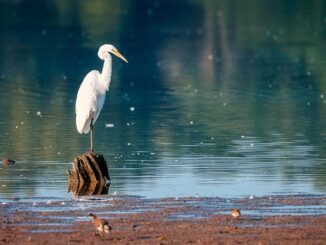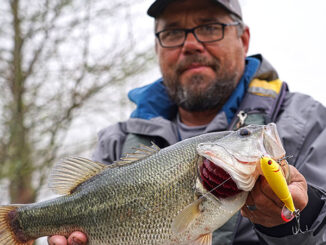
Deep-diving crankbaits can put anglers in touch with bass in hot weather, on Toledo Bend or any other major reservoir.
Toledo Bend Reservoir always ranks high on any list of lakes that produce big bass. An excellent lake for bass numbers since it opened in 1967, the 65-mile-long impoundment straddling the Louisiana-Texas line on the Sabine River started producing numerous double-digit bass after both states began stocking Florida-strain largemouths in the 1980s.
“Toledo Bend is a great lake,” said Kevin VanDam, a four-time Bassmaster Classic champion from Kalamazoo, Mich. “It has so much cover and so many bass that people have many options. Not many lakes in the country produce as many 10-pound bass. On any cast, someone could potentially land a double-digit largemouth or the fish of a lifetime.”
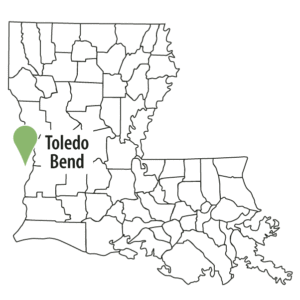 The best fishing for giant bass occurs in late winter and early spring, when big females swollen with roe go shallow to spawn. The fall produces excellent numbers and some big fish as bass feed up for the winter and the spawning season that follows.
The best fishing for giant bass occurs in late winter and early spring, when big females swollen with roe go shallow to spawn. The fall produces excellent numbers and some big fish as bass feed up for the winter and the spawning season that follows.
In the summer, however, the intense southern sunshine can swiftly bake anyone who stays on the lake too long. Many people just fish a few hours in the morning and then go to their camps or elsewhere to cool off. To beat the heat, some folks begin fishing a couple hours before sunset and continue working the lighted docks after dark, particularly on nights with a full moon.
Still, Toledo Bend can produce some monster bucketmouths, even on the hottest days. The lake record — Eric Weems’ 15.32-pound bass — came on a sweltering July morning in 2000 in Six Mile Creek on the Texas side, just north of the dam.
“Toledo Bend has become one of those destination places for people who want to catch a 10-pound bass,” said Darold Gleason of Many, a pro bass fisherman and guide. “Housen Bay and Six Mile Creek are always good places to fish. Patroon Creek and the Blue Lake area are also good on the north end.”
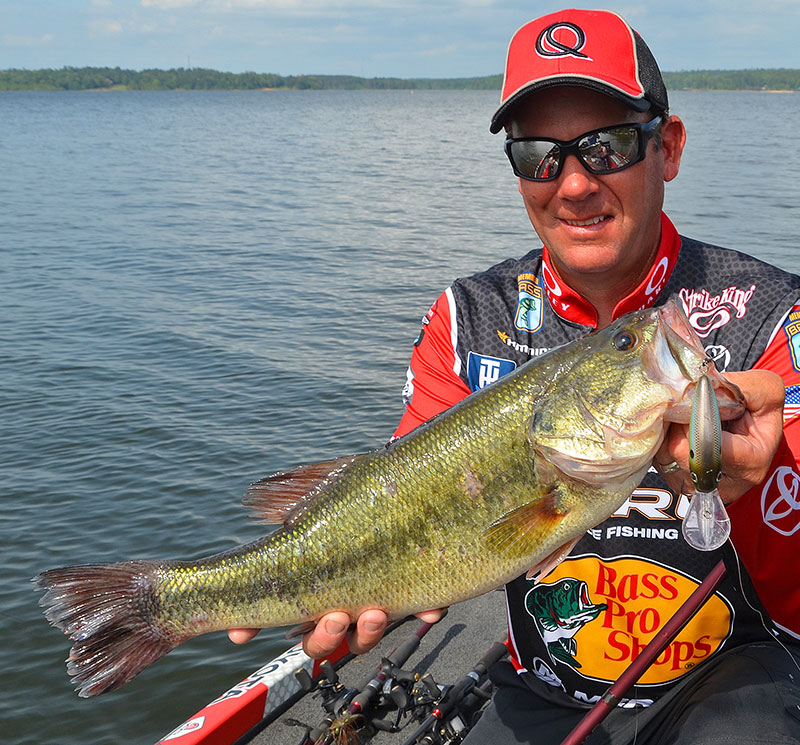
As temperatures rise, big bass drop deeper, where water stays more stable and provides refreshing relief from the broiling sun. With the old Sabine River channel and numerous feeder creeks, the reservoir averages about 60 feet deep, but most people fish in water 25 feet deep or less.
“July can be one of the toughest months to fish Toledo Bend because it’s brutally hot, but that also means fewer anglers on the lake,” said Gleason (337-397-8860). “When fishing is slow in the summer, I look for little windows when they’re feeding. Typically, that’s early or late in the day. In the summer, we fish a lot of offshore structure we locate on our graphs. At that time, the majority of bass will be in 15 to 20 feet of water.”
Thermocline factors
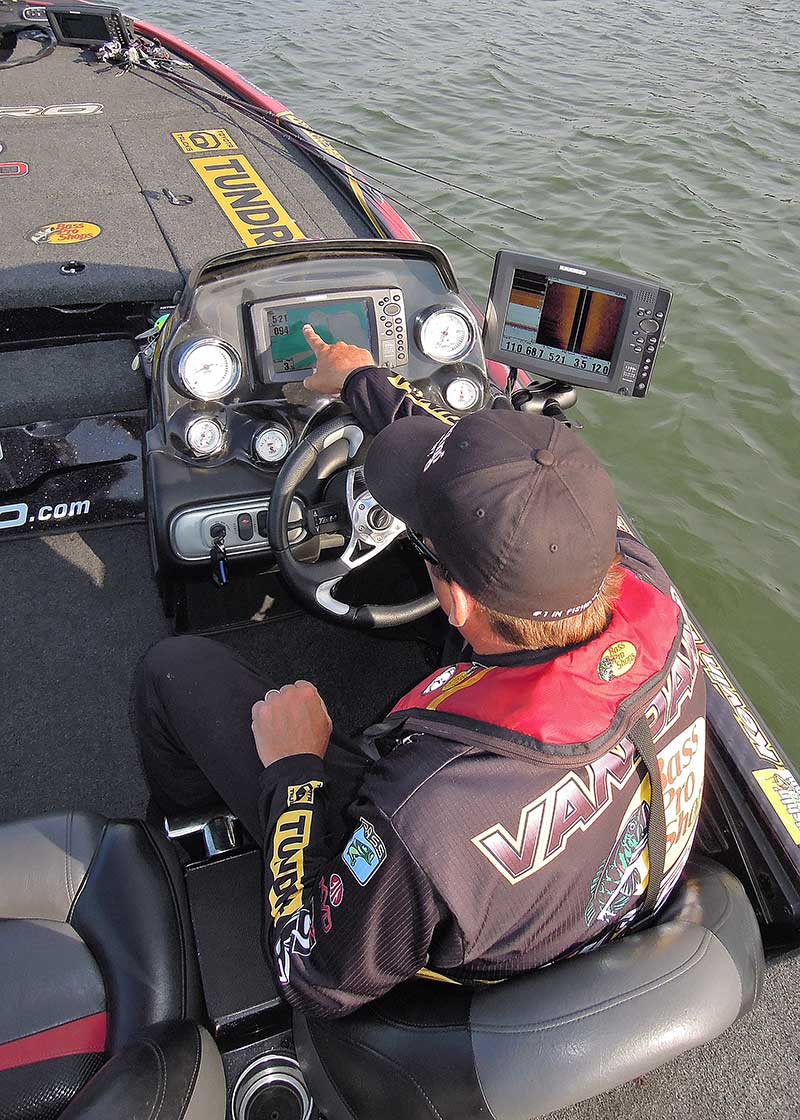
Toledo Bend drops to 110 feet deep in places, but anglers don’t want to fish too deep. During hot weather, the lake stratifies. The hypolimnion, a cold, dense layer with little dissolved oxygen, sits near the bottom, while the epilimnion, the warmer, more oxygenated layer, stays above it. A small third layer, the metalimnion, marks the transition zone where water cools dramatically. The thermocline, an invisible membrane, separates the metalimnion from the hypolimnion.
During summer, bass commonly seek the best combination of oxygen levels, cooler temperatures and food availability. In the summer, Toledo Bend bass primarily feed on abundant threadfin shad, but they also eat larger gizzard shad.
Find the oxygen, comfortable temperatures and shad to locate bass. Bass and baitfish both frequently suspend right above the thermocline. Quality depth finders can detect the thermocline, which usually develops at about 25 to 40 feet deep.
Many anglers traditionally use bottom-bouncing lures, like jigs, worms or drop-shots, but those baits won’t work on bass suspended up in the water column. Many anglers throw short, fat, square-billed crankbaits. These lures resemble bream and can ricochet off objects, but they only dive to about 8 to 10 feet. They make excellent temptations for working shorelines and flats, but not the depths. Heavy, lipless crankbaits resemble shad and can quickly sink to the bottom. They sail long distances and work great for schooling fish.
Get cranky
For bass suspending at the thermocline, though, anglers need something that resembles a shad, but can ride that thermocline at the right depth on a hot July day. Long-billed crankbaits can run varied depths, some to 30 feet or more.
“Crankbaits mimic baitfish and are very versatile baits to throw all-year long,” said pro bass angler Gerald Swindle of Hayden, Ala. “Baits with longer, rounder bills will always be better in super-hot water and really cold water. The longer the bill, the deeper the lure dives. A deep-diving crankbait has a longer, wider lip, rounded on the front. The tip will be much wider than the back of the lip because it’s trying to scoop water and push the bait lower. The bigger the spoon on the tip, the deeper it goes.”
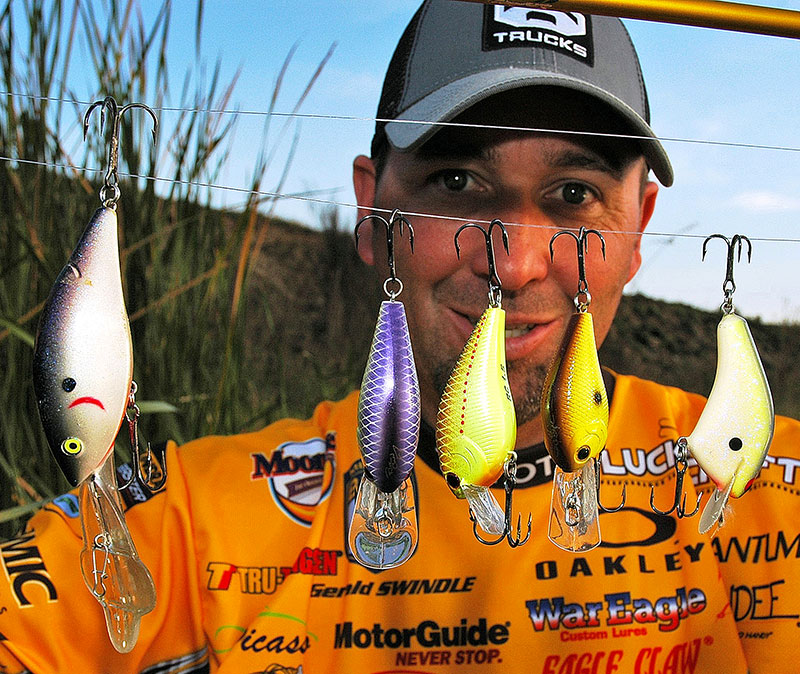
Besides working the upper edge of the thermocline, anglers can use deep-running crankbaits to probe aquatic grasses and run parallel to sloping points or humps. Bass also hover over channel edges where they can drop into deep water or feed on the shallower ledges. Bass commonly hunt near brush piles established for crappie or suspend next to vertical structures such as standing timber, bulkheads and bridge or dock pilings during the summer.
“Deep-running crankbaits are efficient tools for covering deeper water,” VanDam advised. “In the summer, I like to crank ledges with a Strike King 6XD. It can be very effective at that time. It looks like a giant gizzard shad, bluegill or crappie to a hungry bass. That’s what those big fish want to eat. They want a big meal.”
When fishing ledges, use baits that dive slightly deeper than the water depth so the lip digs into the bottom. When fishing deep vegetation, run the bait so the lip tickles the grass tops. Around vertical structure, deliberately bang crankbaits into objects and pause your retrieve so the lure hovers a moment to simulate a stunned baitfish. Often, what looks like a wounded or incapacitated shad can prove too tempting for bass to resist.
“I like to do a lot of deep cranking around bridge pilings for suspended fish,” VanDam said. “I’ll throw different bait sizes to run at different depths until I find the right crankbait that gets to the best zone. I don’t just run a crankbait in a straight line. I’ll give it a little jerk to make it move more erratically. That erratic action triggers bass into biting.”
When fishing deep water, stick to colors that mimic shad like pearl/black. Experiment with colors, shapes, depths and retrieves to determine the best combination for that day.
“Deep-running crankbaits are a great idea to use during the summer, especially when we find bass grouped up tight,” Gleason said. “For colors, I keep it simple. My favorites are chartreuse/blue, citrus shad and shad-type colors, but deep-cranking is more about locating active groups of fish and getting a reaction than about the colors.”

Tackle needs
To get baits deep it takes work. Use at least a 7-foot medium-action rod with a light tip. Fiberglass rods flex a little more than graphite, and that slight delay allows bass to grab baits better. Make the longest casts possible and use reels with wide spools that can hold plenty of line and are designed more for power than speed — with slower gear ratios, around 5:1 to 5.6:1.
“For deep cranking, a person needs a lower gear for more power, but the longest rod possible to create distance in the cast,” said Terry Scroggins, a bass pro from San Mateo, Fla. “The longer the cast, the deeper the bait can run. I usually use 12-pound fluorocarbon for cranking, but sometimes I’ll drop it down to 10-pound if I want to get a little deeper.”
Fluorocarbon sinks and virtually disappears in the water. It doesn’t stretch as much as monofilament, so it gives an angler better sensitivity. Thicker line creates more drag, so a bait doesn’t dive as deep. Anglers can make the same lure run a bit deeper by using lighter line.
Long-lipped crankbaits catch bass, but they take great effort to fish. Even a fit angler can tire easily after repeatedly cranking big, deep-diving lures back to the boat. Most bass tournaments prohibit trolling, but anglers just out for fun can stick a couple rods in holders and troll deep-divers with either gasoline or electric power to cover large tracts of water. Troll baits along the channel drops.
Anglers throwing crankbaits in the right place at the right time can often put many giant bass in the boat quickly, particularly when bass feed ravenously upon shad or other baitfish. When temperatures rise, get a little cranky.
